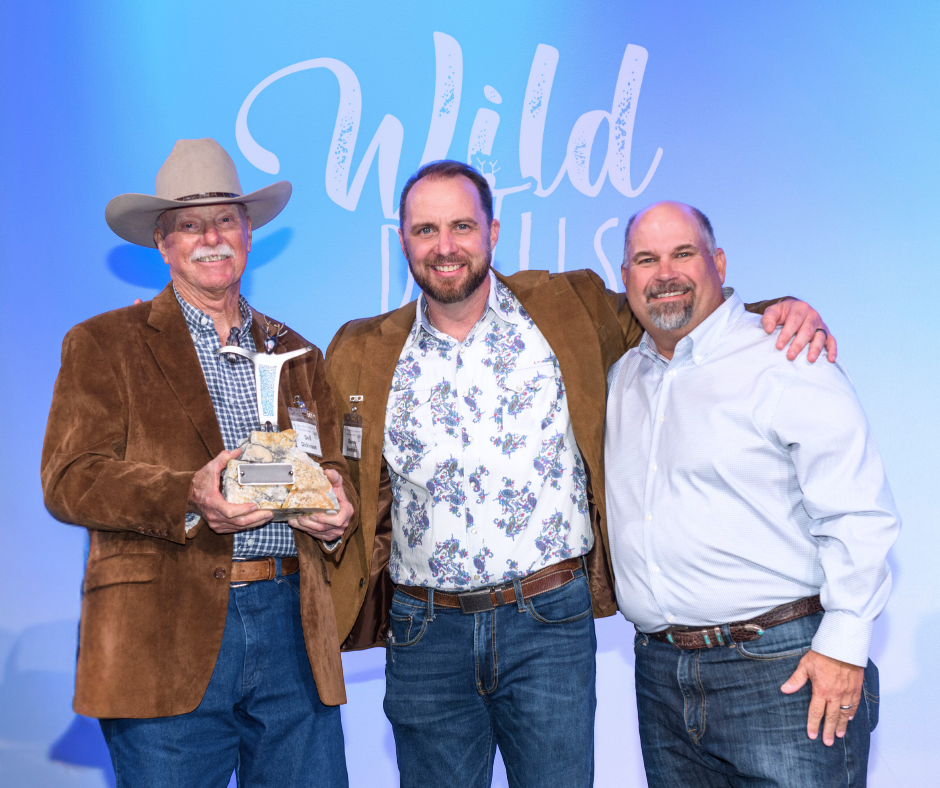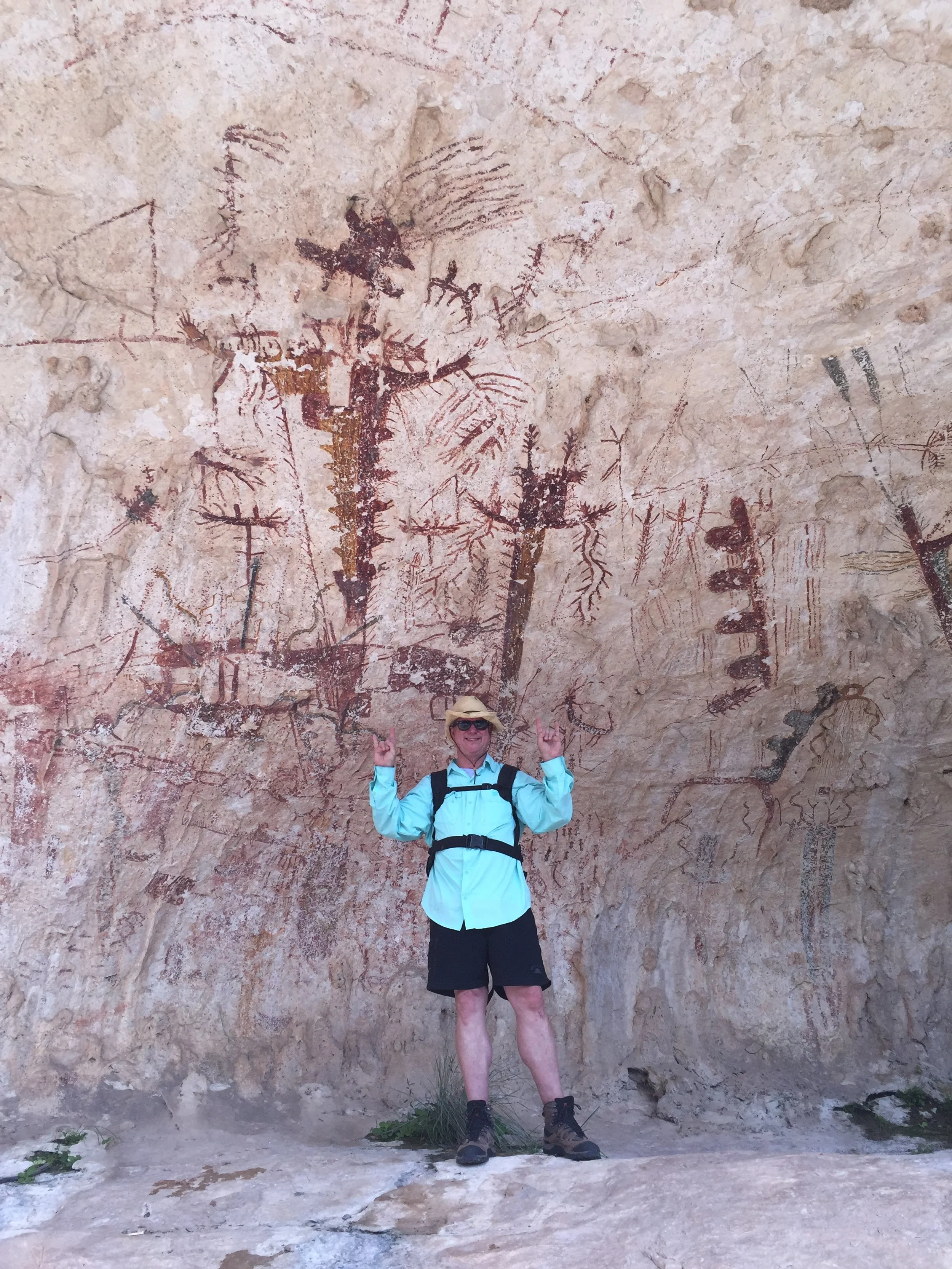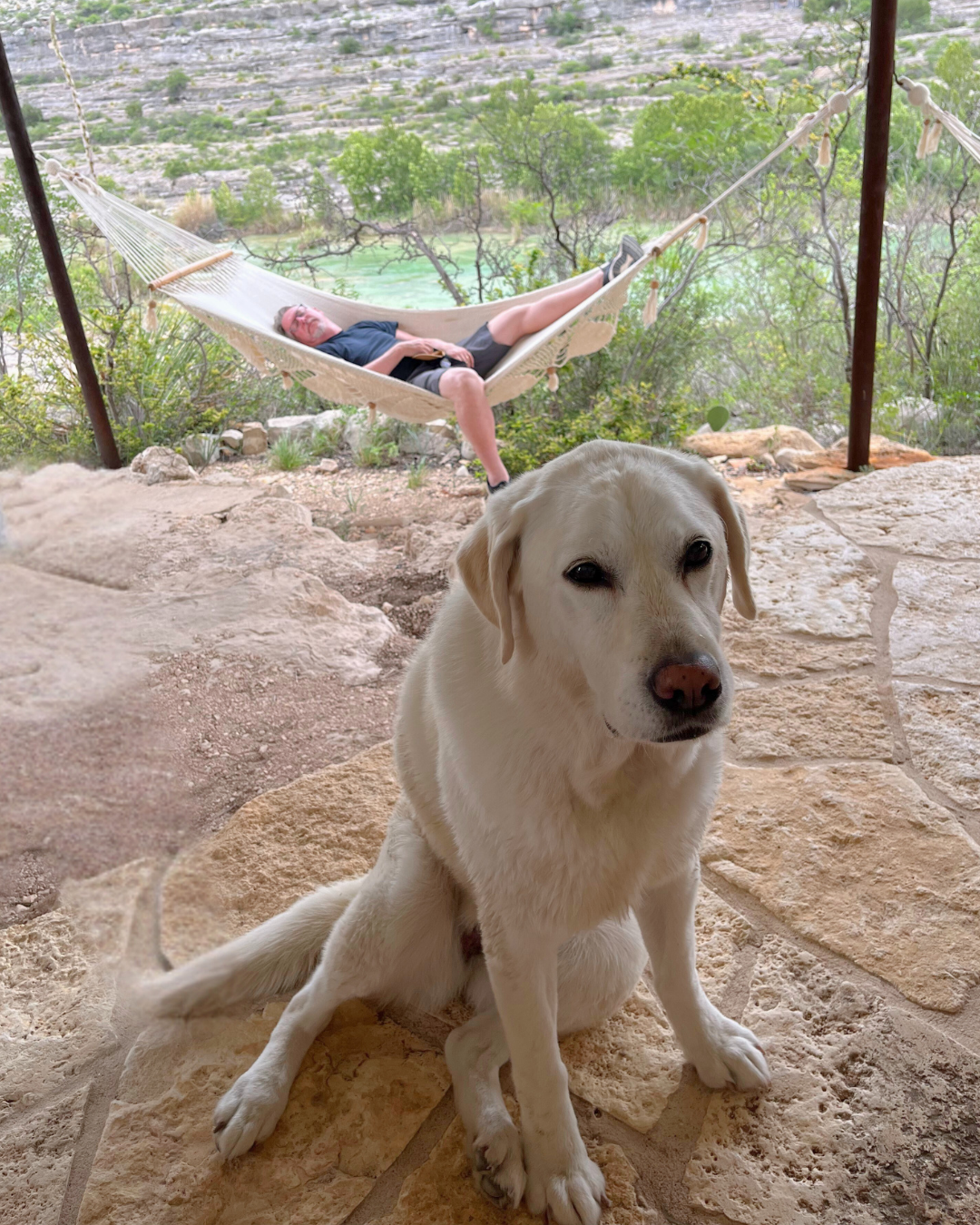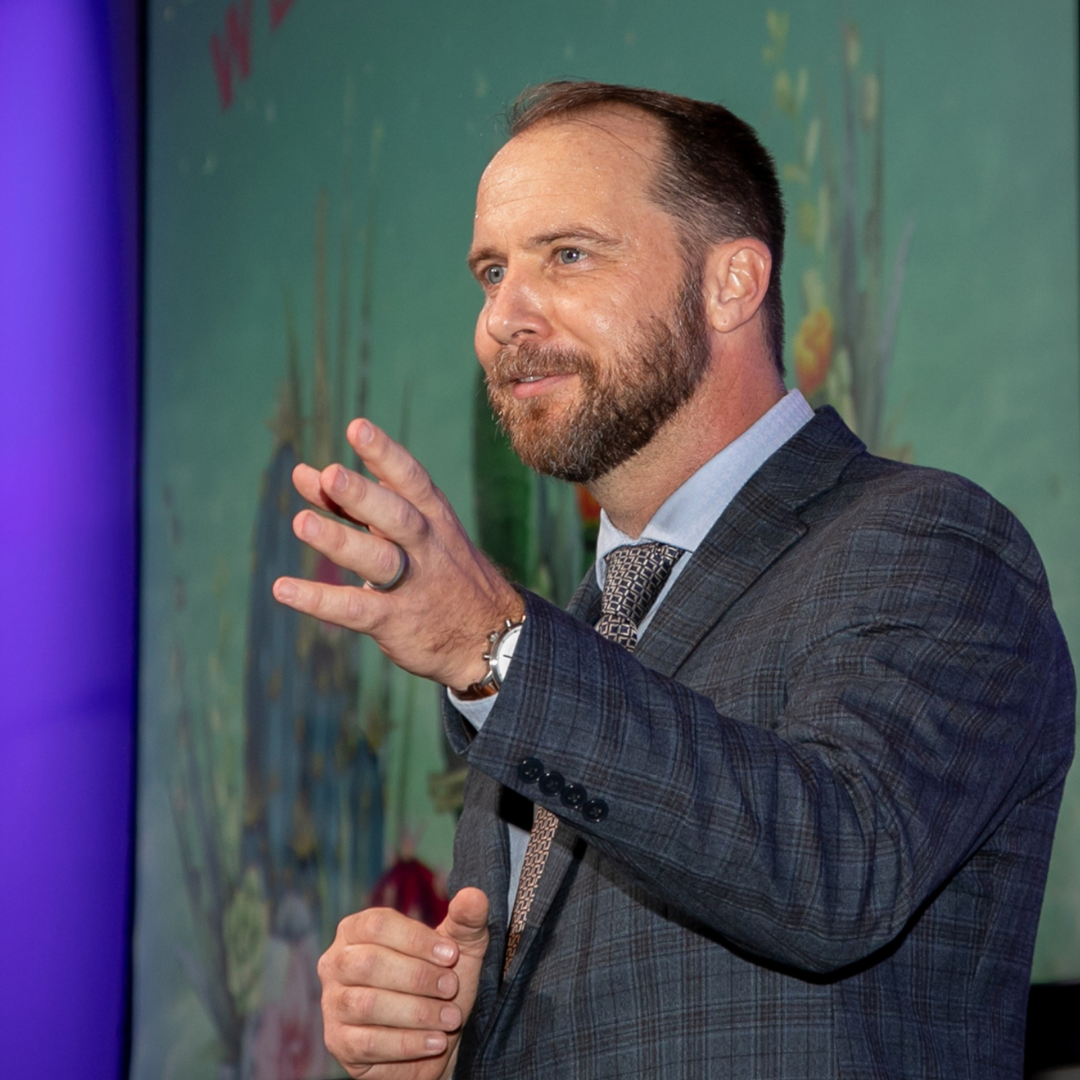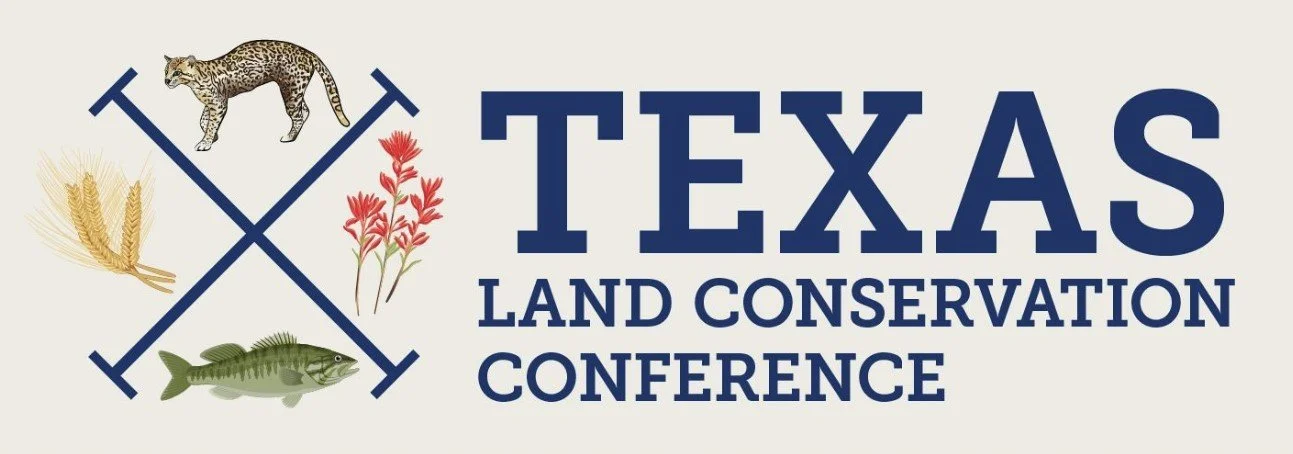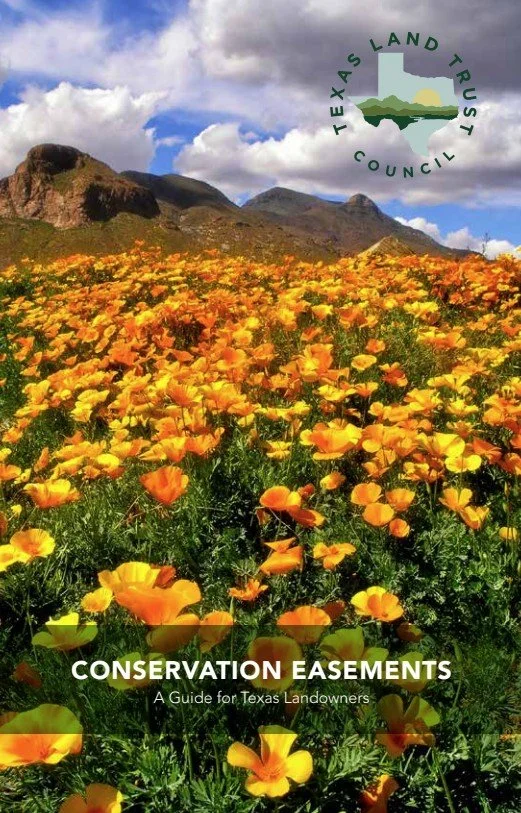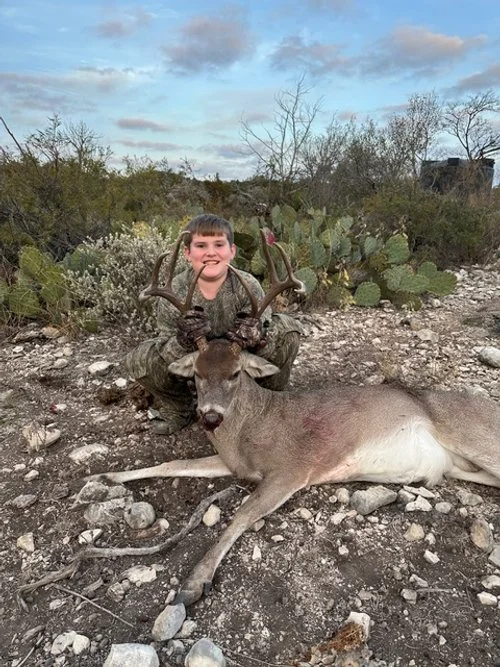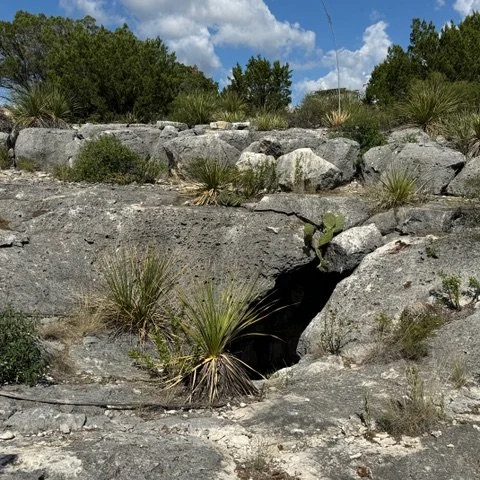Announcing Devils River Conservancy’s 2025 Rio San Pedro Stewardship Award Recipient
DAVID HONEYCUTT
David Honeycutt, Founder of Devils River Conservancy
Please join us in celebrating David Honeycutt, our 2025 Rio San Pedro Stewardship Award recipient, at the Wild Devils Gala on October 23rd!
Tickets are on sale now through October 19th.
Keep reading to learn more about the award and why David was chosen as this year’s recipient.
What is the Rio San Pedro Stewardship Award?
The Rio San Pedro Stewardship Award statuette features an antlered anthropomorph as seen in Devils River Conservancy’s logo, representing iconography commonly featured in Indigenous rock art of the Lower Pecos style, found throughout the Devils River Basin. Its design seeks to acknowledge the original stewards of this land and its rivers over thousands of years while also celebrating the incredible efforts of the stewards of our lifetime.
Devils River Conservancy created the Rio San Pedro Stewardship Award to honor individuals whose lives embody a deep and enduring commitment to protecting and preserving the Devils River. Named for the river’s original Spanish name in recorded history, the award represents not just recognition, but reverence. Recipients reflect the values that sustain this landscape: loyalty, humility, perseverance, and compassion.
At its core, the award acknowledges a truth long understood by those who live along the river: that stewardship isn’t a title—it’s a way of life. Those honored are not only defenders of land and water, but also of heritage, culture, and community.
A BRIEF HISTORY TO RECOGNIZE A LONG HISTORY
Dell Dickinson, 2024 Rio San Pedro Stewardship Award Recipient
In 2024, we were proud to recognize our inaugural recipient, Dell Dickinson, a multi-generational landowner whose family roots along the Devils River trace back to the 1890s. Dell’s lifetime of stewardship has been shaped by a childhood spent on the land, a deep sense of responsibility, and a willingness to lead—even when it meant challenging conventional thinking.
Dell recalls his earliest memory of the river at just three years old, camping with his family at his grandfather’s favorite spot. “This river and the surrounding viewshed has always been there for me,” he shared, “and has helped shape my life and how I live it.” That life has been guided by principles instilled from an early age: initiative, self-reliance, and the belief that one’s role is not to dominate the land, but to serve as its caretaker.
Through both words and actions, Dell has helped build a conservation culture in Val Verde County that values collaboration and long-term thinking. He helped form partnerships with Texas Parks and Wildlife Department that significantly reduced river trespass and trash issues. “I finally figured out, this isn’t working... but partnering with TPWD made an almost miraculous difference,” he said. “The problems almost disappeared overnight.”
Even as threats to the region persist, Dell remains rooted in hope. He is vocal about the tensions between recreationists and residents, particularly the disconnect in how the land is treated. But he views this challenge as one of education, not division. “If we could somehow educate [recreationists who] are coming out to visit this precious land to where they would [see themselves] stewards… that would be great.” His example and his steadfast presence continue to inspire a shared ethic of stewardship along the Devils River.
Dell Dickinson (left) with Devils River Conservancy’s Executive Director, Romey Swanson (center), and Vice President, Andy Iverson (right) at the 2024 Wild Devils Gala.
ANNOUNCING OUR 2025 AWARD RECIPIENT
This October 23rd, the tradition continues. At our Wild Devils Gala at the Witte Museum in San Antonio, Devils River Conservancy will proudly present the 2025 Rio San Pedro Stewardship Award to someone whose vision and leadership helped shape the very foundation of our organization—David Honeycutt.
David has long understood that the Devils River is more than a ribbon of water—it’s a living landscape and a resilient community. From placing his own lands under conservation easement, to guiding organizations like The Nature Conservancy and the Devils River Conservancy itself, David has shown what it means to lead with integrity and foresight.
He has been a powerful advocate for land uses that are compatible with the region’s unique ecology, cultural legacy, and working lands heritage. Whether opposing development that would fragment the viewshed or supporting investments that align with the values of local landowners and the operational needs of Laughlin Air Force Base, David has worked to ensure that conservation and community resilience go hand in hand.
David at his home on the Devils River with his dog, Boo Radley. David’s property is under a conservation easement with The Nature Conservancy, ensuring it is protected in perpetuity.
Please join us in celebrating David Honeycutt, our 2025 Rio San Pedro Stewardship Award recipient. His legacy, like Dell’s, reminds us that stewardship is not a role reserved for a few—it is a responsibility we all share. The Devils River needs champions of every kind. We hope you’ll join us in honoring this year’s award recipient and in continuing to protect what makes this place extraordinary.
WILD DEVILS GALA
We invite you to attend the 2025 Wild Devils Gala on October 23rd, where we will celebrate David’s conservation achievements and continued efforts to protect the natural and cultural significance of the Devils River Basin.
Tickets will remain available until October 19th.
HONORING DAVID HONEYCUTT
If you would like to make a charitable donation to Devils River Conservancy, a 501(c)3 nonprofit, in honor of David Honeycutt, please click below. All proceeds from this fund and the Wild Devils Gala support Devils River Conservancy’s ongoing efforts to preserve and protect the Devils River and the lands within its watershed.





